Dominik Zietlow
Unsupervised Open-Vocabulary Object Localization in Videos
Sep 18, 2023
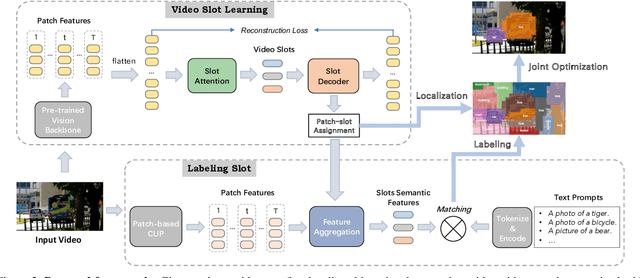
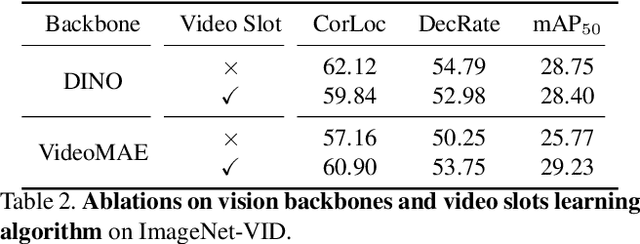
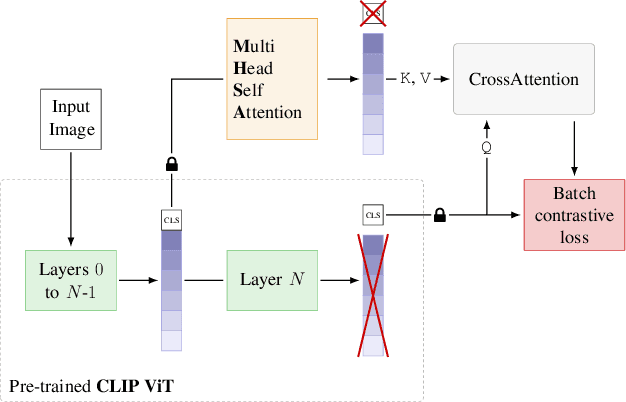
Abstract:In this paper, we show that recent advances in video representation learning and pre-trained vision-language models allow for substantial improvements in self-supervised video object localization. We propose a method that first localizes objects in videos via a slot attention approach and then assigns text to the obtained slots. The latter is achieved by an unsupervised way to read localized semantic information from the pre-trained CLIP model. The resulting video object localization is entirely unsupervised apart from the implicit annotation contained in CLIP, and it is effectively the first unsupervised approach that yields good results on regular video benchmarks.
Object-Centric Multiple Object Tracking
Sep 05, 2023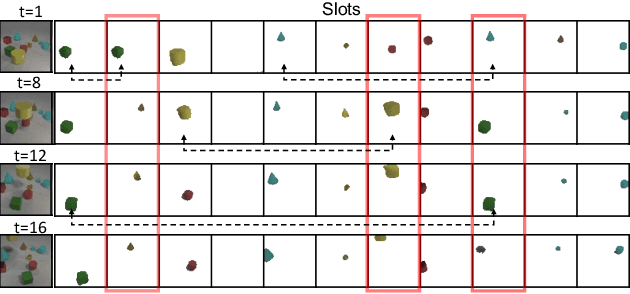
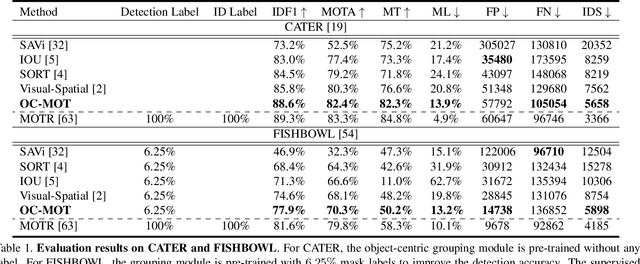


Abstract:Unsupervised object-centric learning methods allow the partitioning of scenes into entities without additional localization information and are excellent candidates for reducing the annotation burden of multiple-object tracking (MOT) pipelines. Unfortunately, they lack two key properties: objects are often split into parts and are not consistently tracked over time. In fact, state-of-the-art models achieve pixel-level accuracy and temporal consistency by relying on supervised object detection with additional ID labels for the association through time. This paper proposes a video object-centric model for MOT. It consists of an index-merge module that adapts the object-centric slots into detection outputs and an object memory module that builds complete object prototypes to handle occlusions. Benefited from object-centric learning, we only require sparse detection labels (0%-6.25%) for object localization and feature binding. Relying on our self-supervised Expectation-Maximization-inspired loss for object association, our approach requires no ID labels. Our experiments significantly narrow the gap between the existing object-centric model and the fully supervised state-of-the-art and outperform several unsupervised trackers.
A data augmentation perspective on diffusion models and retrieval
Apr 20, 2023Abstract:Diffusion models excel at generating photorealistic images from text-queries. Naturally, many approaches have been proposed to use these generative abilities to augment training datasets for downstream tasks, such as classification. However, diffusion models are themselves trained on large noisily supervised, but nonetheless, annotated datasets. It is an open question whether the generalization capabilities of diffusion models beyond using the additional data of the pre-training process for augmentation lead to improved downstream performance. We perform a systematic evaluation of existing methods to generate images from diffusion models and study new extensions to assess their benefit for data augmentation. While we find that personalizing diffusion models towards the target data outperforms simpler prompting strategies, we also show that using the training data of the diffusion model alone, via a simple nearest neighbor retrieval procedure, leads to even stronger downstream performance. Overall, our study probes the limitations of diffusion models for data augmentation but also highlights its potential in generating new training data to improve performance on simple downstream vision tasks.
Causal Triplet: An Open Challenge for Intervention-centric Causal Representation Learning
Jan 12, 2023



Abstract:Recent years have seen a surge of interest in learning high-level causal representations from low-level image pairs under interventions. Yet, existing efforts are largely limited to simple synthetic settings that are far away from real-world problems. In this paper, we present Causal Triplet, a causal representation learning benchmark featuring not only visually more complex scenes, but also two crucial desiderata commonly overlooked in previous works: (i) an actionable counterfactual setting, where only certain object-level variables allow for counterfactual observations whereas others do not; (ii) an interventional downstream task with an emphasis on out-of-distribution robustness from the independent causal mechanisms principle. Through extensive experiments, we find that models built with the knowledge of disentangled or object-centric representations significantly outperform their distributed counterparts. However, recent causal representation learning methods still struggle to identify such latent structures, indicating substantial challenges and opportunities for future work. Our code and datasets will be available at https://sites.google.com/view/causaltriplet.
Bridging the Gap to Real-World Object-Centric Learning
Sep 29, 2022
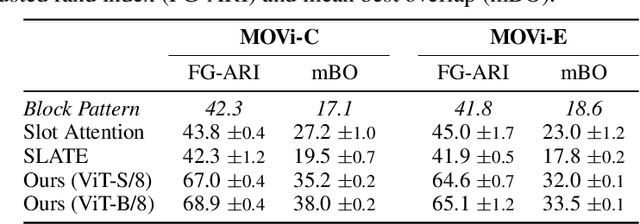
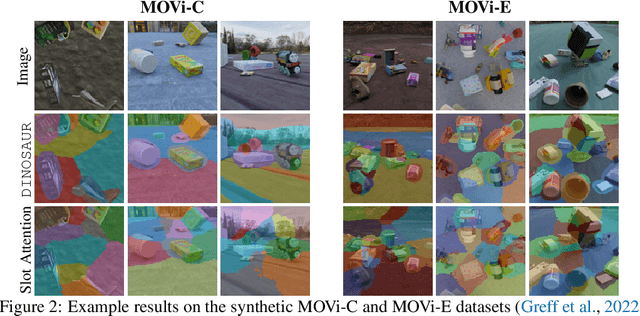
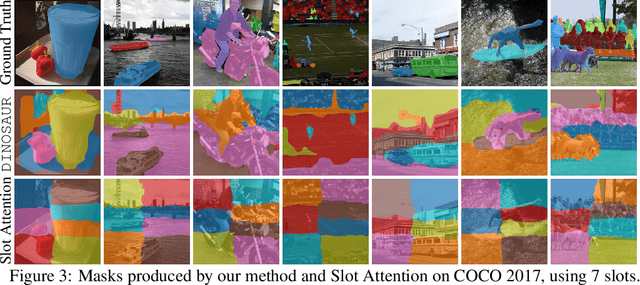
Abstract:Humans naturally decompose their environment into entities at the appropriate level of abstraction to act in the world. Allowing machine learning algorithms to derive this decomposition in an unsupervised way has become an important line of research. However, current methods are restricted to simulated data or require additional information in the form of motion or depth in order to successfully discover objects. In this work, we overcome this limitation by showing that reconstructing features from models trained in a self-supervised manner is a sufficient training signal for object-centric representations to arise in a fully unsupervised way. Our approach, DINOSAUR, significantly out-performs existing object-centric learning models on simulated data and is the first unsupervised object-centric model that scales to real world-datasets such as COCO and PASCAL VOC. DINOSAUR is conceptually simple and shows competitive performance compared to more involved pipelines from the computer vision literature.
Assaying Out-Of-Distribution Generalization in Transfer Learning
Jul 19, 2022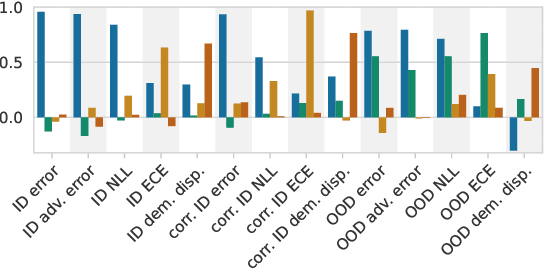
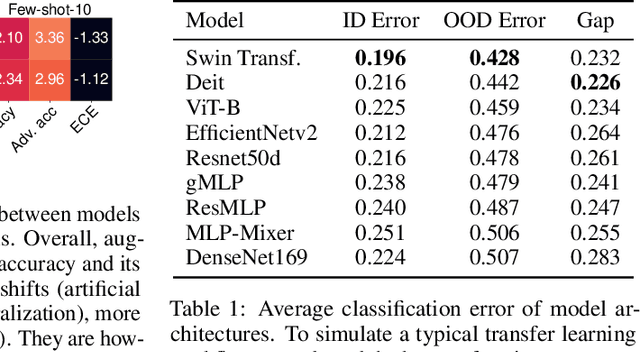


Abstract:Since out-of-distribution generalization is a generally ill-posed problem, various proxy targets (e.g., calibration, adversarial robustness, algorithmic corruptions, invariance across shifts) were studied across different research programs resulting in different recommendations. While sharing the same aspirational goal, these approaches have never been tested under the same experimental conditions on real data. In this paper, we take a unified view of previous work, highlighting message discrepancies that we address empirically, and providing recommendations on how to measure the robustness of a model and how to improve it. To this end, we collect 172 publicly available dataset pairs for training and out-of-distribution evaluation of accuracy, calibration error, adversarial attacks, environment invariance, and synthetic corruptions. We fine-tune over 31k networks, from nine different architectures in the many- and few-shot setting. Our findings confirm that in- and out-of-distribution accuracies tend to increase jointly, but show that their relation is largely dataset-dependent, and in general more nuanced and more complex than posited by previous, smaller scale studies.
Embrace the Gap: VAEs Perform Independent Mechanism Analysis
Jun 06, 2022
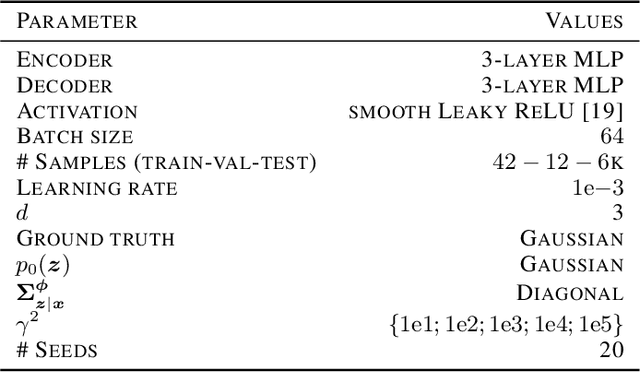

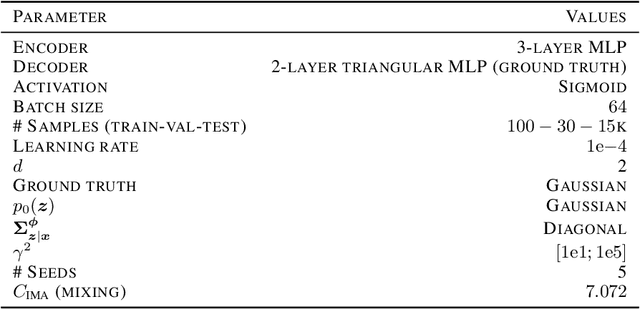
Abstract:Variational autoencoders (VAEs) are a popular framework for modeling complex data distributions; they can be efficiently trained via variational inference by maximizing the evidence lower bound (ELBO), at the expense of a gap to the exact (log-)marginal likelihood. While VAEs are commonly used for representation learning, it is unclear why ELBO maximization would yield useful representations, since unregularized maximum likelihood estimation cannot invert the data-generating process. Yet, VAEs often succeed at this task. We seek to elucidate this apparent paradox by studying nonlinear VAEs in the limit of near-deterministic decoders. We first prove that, in this regime, the optimal encoder approximately inverts the decoder -- a commonly used but unproven conjecture -- which we refer to as {\em self-consistency}. Leveraging self-consistency, we show that the ELBO converges to a regularized log-likelihood. This allows VAEs to perform what has recently been termed independent mechanism analysis (IMA): it adds an inductive bias towards decoders with column-orthogonal Jacobians, which helps recovering the true latent factors. The gap between ELBO and log-likelihood is therefore welcome, since it bears unanticipated benefits for nonlinear representation learning. In experiments on synthetic and image data, we show that VAEs uncover the true latent factors when the data generating process satisfies the IMA assumption.
Leveling Down in Computer Vision: Pareto Inefficiencies in Fair Deep Classifiers
Mar 31, 2022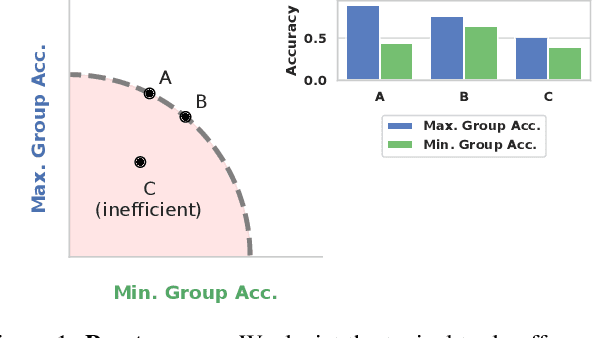

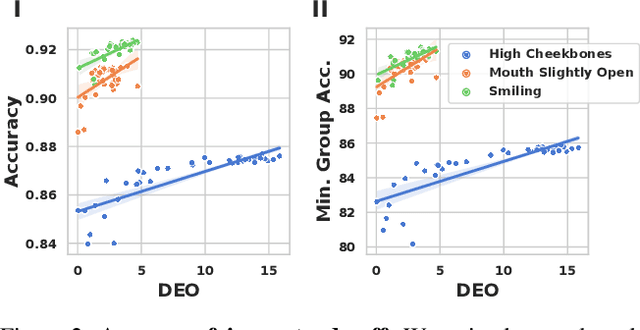
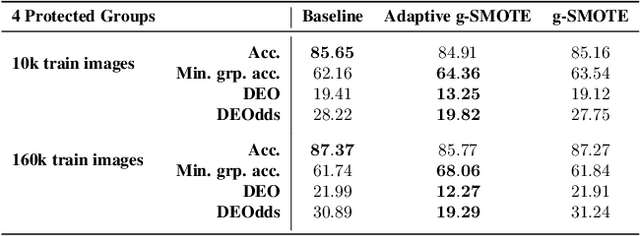
Abstract:Algorithmic fairness is frequently motivated in terms of a trade-off in which overall performance is decreased so as to improve performance on disadvantaged groups where the algorithm would otherwise be less accurate. Contrary to this, we find that applying existing fairness approaches to computer vision improve fairness by degrading the performance of classifiers across all groups (with increased degradation on the best performing groups). Extending the bias-variance decomposition for classification to fairness, we theoretically explain why the majority of fairness classifiers designed for low capacity models should not be used in settings involving high-capacity models, a scenario common to computer vision. We corroborate this analysis with extensive experimental support that shows that many of the fairness heuristics used in computer vision also degrade performance on the most disadvantaged groups. Building on these insights, we propose an adaptive augmentation strategy that, uniquely, of all methods tested, improves performance for the disadvantaged groups.
InvGAN: Invertible GANs
Dec 10, 2021



Abstract:Generation of photo-realistic images, semantic editing and representation learning are a few of many potential applications of high resolution generative models. Recent progress in GANs have established them as an excellent choice for such tasks. However, since they do not provide an inference model, image editing or downstream tasks such as classification can not be done on real images using the GAN latent space. Despite numerous efforts to train an inference model or design an iterative method to invert a pre-trained generator, previous methods are dataset (e.g. human face images) and architecture (e.g. StyleGAN) specific. These methods are nontrivial to extend to novel datasets or architectures. We propose a general framework that is agnostic to architecture and datasets. Our key insight is that, by training the inference and the generative model together, we allow them to adapt to each other and to converge to a better quality model. Our \textbf{InvGAN}, short for Invertible GAN, successfully embeds real images to the latent space of a high quality generative model. This allows us to perform image inpainting, merging, interpolation and online data augmentation. We demonstrate this with extensive qualitative and quantitative experiments.
Demystifying Inductive Biases for $β$-VAE Based Architectures
Feb 12, 2021


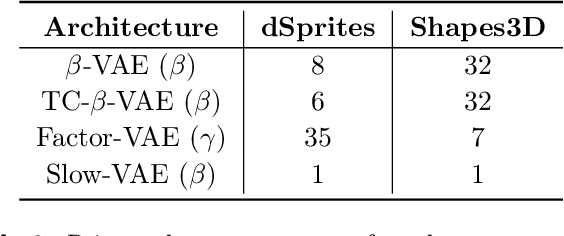
Abstract:The performance of $\beta$-Variational-Autoencoders ($\beta$-VAEs) and their variants on learning semantically meaningful, disentangled representations is unparalleled. On the other hand, there are theoretical arguments suggesting the impossibility of unsupervised disentanglement. In this work, we shed light on the inductive bias responsible for the success of VAE-based architectures. We show that in classical datasets the structure of variance, induced by the generating factors, is conveniently aligned with the latent directions fostered by the VAE objective. This builds the pivotal bias on which the disentangling abilities of VAEs rely. By small, elaborate perturbations of existing datasets, we hide the convenient correlation structure that is easily exploited by a variety of architectures. To demonstrate this, we construct modified versions of standard datasets in which (i) the generative factors are perfectly preserved; (ii) each image undergoes a mild transformation causing a small change of variance; (iii) the leading \textbf{VAE-based disentanglement architectures fail to produce disentangled representations whilst the performance of a non-variational method remains unchanged}. The construction of our modifications is nontrivial and relies on recent progress on mechanistic understanding of $\beta$-VAEs and their connection to PCA. We strengthen that connection by providing additional insights that are of stand-alone interest.
 Add to Chrome
Add to Chrome Add to Firefox
Add to Firefox Add to Edge
Add to Edge